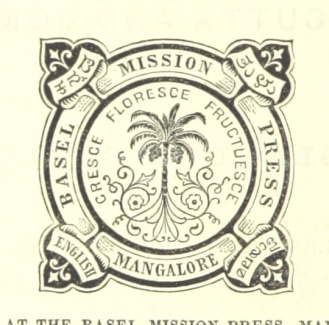By Janaki Nair

The tryst with dust begins with the dog-eared catalogues, in an untidy row on a rack near the few sets of tables reserved for scholars. The ambient noise and frequent and anxious queries about whether her last meal has been taken (“oota ayitha?”) combine to slowly inure the scholar visiting the Karnataka State Archives to assaults on the senses. KSA has never believed that research must take place in a sequestered environment; the true test of the committed researcher is to remain undistracted and absorbed with the yellowing crumbling pages before her despite the constant shuffle and loud talk around.
The business of settling down to work by the archival staff – opening and closing metal drawers, to the accompaniment of loud comments on the bus ride to work (now happily shifted to the travails of the metro), children’s illnesses, the state of the State – is best ignored by the scholar easing into the normal working of archives. By about 11.30 am, after having sat fidgeting in their cabins, or at their desks, depending on their place in the hierarchy, as staff start drifting away for their morning cup there is a respite when the huge cavernous archives fall briefly silent. Then, vigorous discussion is resumed, within the earshot of scholars, of the price of sites, houses in this fast-growing metropolis. Yet the stacks of files exert their own charm and fascination. And their own set of distractions.
The Kolar Gold Fields – attaching the past to the present
Looking back on my career, I wonder how often that sidetracking from the determined search for paper trails, the tracking of a chronological sequence, has been rewarding. Sometime in 1989, while in the Karnataka State Archives, I came across a reference to a strike in Kolar Gold Fields on April 6, 1930, the very day when Gandhi broke the salt laws. Requisitioning the file transported me immediately to another part of Mysore, to the dark tunnels two kilometres underground where three generations of gold miners had worked. That file, an accidental find, then led me to KGF, to “reattach the past to the present” (as Arlette Farge has put it). I developed a warm association with and a deep understanding of its inhabitants, their sense of the place as both liberating and exploitative.
An inheritance denied
Many such engagements are suddenly enabled when the bundles of files are brought out: disappointment at a trail running dry, elation when, not one, but fifteen fat files related to the debts of the Maharaja of Mysore tell a fascinating tale of women, widowed, driven to insanity, hopeful, being denied their rightful inheritance. We may not have gone looking for these women, but they spring, from the enigmatic shadows of petitions written by those adept at the law, they turn, as if in despair, to the possible new airing that the mere historian may give to their faded, papery presence.
Sensory pleasures of the paper file
Imagine the surprise when, on my recent visit to the Karnataka State Archives, I was warmly welcomed to a completely new way of doing research, since all the files had been digitized. No more that tactility, that direct connection with the past as you turn the yellowing pages, that perpetual acquaintance with dust. Natalie Davis, similarly, laments what we have lost in the process of new technologies of access, which are so much more convenient, and yet deprive us of the file as a sensory object. The petty joys of easier access, of going home with entire bundles of files in your small thumb drive, cannot replace the rewards of that meandering, that slow absorption that marked our own pasts as researchers. In that unexpected, chance encounter with the cantankerous bureaucrat, the frightened peasant, the pious but unhinged woman, that eloquent worker and his “anonymous” note, that which may never become an article or a book, or even a footnote, but yet has enthralled the reader for many hours at the small cramped desk, that encounter will never be the same again.
..and of distractions that lead nowhere
I still remember the call I once received from a student who had visited the National Library in Calcutta, where she had found some strikingly relevant materials with which to take her research forward. Her enthusiasm matched that of one who discovered a new vein of gold in the dark, spent, underground. Others may report how their eyes glaze over when they see the long rows of spidery figures, meticulously maintained, on what has been spent on say, education, or on the construction of a building. But it is those who report that they have been distracted by the trial of witches when they were searching for the agricultural labourer, or by the long disquisition on the infirmities of caste when they only wanted access to the education of the artisan or those captivated by the richly embroidered handwriting in the private papers of a businessman, these trails that might lead nowhere, that make the defiantly dull environs of the archives an absorbing and enticing place.

Janaki Nair is Professor of Modern History at Jawaharlal Nehru University, New Delhi. Her publications include The Promise of the Metropolis: Bangalore’s Twentieth Century, OUP, 2007; Women and Law in Colonial India: A Social History, Kali for Women in collaboration with the National Law School of India University, 1996; Mysore Modern: Rethinking the Region Under Princely Rule, University of Minnesota Press, 2011; and Miners and Millhands: Work, Culture and Politics in Princely Mysore, Sage Publications, 1998.